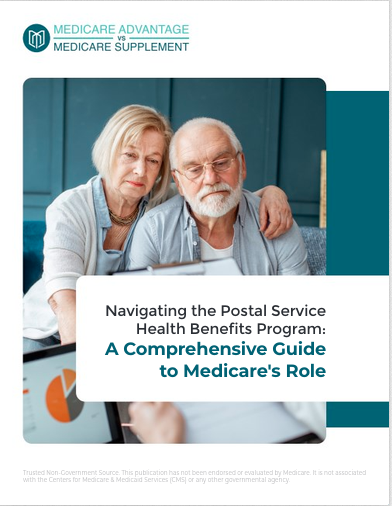Key Takeaways
-
A Medicare plan may appear comprehensive on paper, but out-of-pocket costs can limit how much you actually use it.
-
Understanding coinsurance, deductibles, and network limitations in 2025 is essential to making your plan truly affordable.
Medicare Coverage Is Not Automatically Affordable
When you enrolled in Medicare, you probably assumed that your health coverage would become more predictable and accessible. But in 2025, affordability is still a serious concern. A benefit only works when you can use it without worrying about how much it will cost to see a doctor, fill a prescription, or access emergency care.
Even with Medicare Parts A and B as a foundation, out-of-pocket costs like deductibles, coinsurance, and copayments continue to cause financial strain for many enrollees. And while additional options like Medicare Advantage or Supplement plans can help, those also come with their own financial hurdles.
Understanding Your Medicare Cost-Sharing
Original Medicare includes several types of cost-sharing that affect how much you pay for care:
-
Part A deductible (2025): $1,676 per benefit period for hospital stays.
-
Part B deductible (2025): $257 annually, followed by 20% coinsurance for most services.
-
Coinsurance for hospital stays: After 60 days, you pay $419 per day; after 90 days, $838 per day using lifetime reserve days.
-
Skilled nursing care: $209.50 per day from days 21 to 100.
These costs can quickly add up, especially during prolonged illness or hospitalization. If you’re not budgeting for them or have no supplemental coverage, you may find yourself avoiding care simply because you can’t afford to pay the share owed.
Prescription Coverage Can Still Feel Out of Reach
Even with improvements to Medicare Part D in 2025—like the introduction of a $2,000 annual out-of-pocket cap—prescription drug costs still leave many enrollees cautious. Before reaching the cap, you must go through the deductible phase (up to $590) and initial coverage period, where you share costs with your plan.
Some medications require high coinsurance or fall into higher tiers, which can delay adherence or lead people to skip prescriptions entirely. And although the $2,000 ceiling seems reassuring, it doesn’t reset monthly—it’s annual. That means if you fill a costly prescription in January, you could still face upfront expenses that stretch your monthly budget.
Premiums Are Only Part of the Picture
Focusing solely on your monthly premium can be misleading. A low premium may look appealing, but it often comes with:
-
Higher deductibles
-
Narrower provider networks
-
More cost-sharing at the point of care
Conversely, a higher premium plan may reduce your costs when you actually use your benefits. But even then, you have to consider whether you can afford that premium every month without sacrificing other essentials.
When evaluating your Medicare coverage, always weigh the total cost of ownership—not just what comes out of your account each month. That includes expected annual out-of-pocket expenses, drug costs, travel-related costs if your plan limits you to certain networks, and whether supplemental coverage offsets any gaps.
Networks May Limit Access to Affordable Care
Medicare Advantage plans in particular can have restrictive provider networks. If your preferred doctor or hospital isn’t in-network, you may:
-
Be charged more—or the full price—out-of-network
-
Have to travel further for covered services
-
Struggle to find local specialists who accept your plan
For people managing chronic conditions, these limitations can lead to costly delays in care. A “covered benefit” doesn’t help if the in-network provider is unavailable or hours away.
Even Original Medicare has its nuances. While it generally allows more flexibility in provider choice, certain services—like some durable medical equipment or home health care—may only be covered from approved suppliers.
Timing Can Affect What You Pay
Medicare has structured enrollment periods, and missing them can trigger late penalties or coverage gaps:
-
Initial Enrollment Period: Begins 3 months before and ends 3 months after your 65th birthday month.
-
General Enrollment Period: January 1 to March 31 annually if you missed initial enrollment.
-
Annual Open Enrollment: October 15 to December 7 each year to change plans.
If you miss these windows or delay adding supplemental coverage, you could be exposed to full out-of-pocket costs for longer than necessary. And while late penalties for Part B or Part D may seem minor monthly, they are lifetime penalties that increase the longer you delay.
Supplemental Coverage Isn’t Always the Solution
Many people turn to Medigap policies to reduce out-of-pocket costs, especially when enrolled in Original Medicare. While these plans cover many deductibles and coinsurances, affordability is still a barrier:
-
Premiums can be high, especially if you’re older or have delayed enrollment.
-
You must pay for Medigap in addition to your Part B premium.
-
Plans may not cover prescriptions, so you’ll still need Part D.
Medicare Advantage plans sometimes seem like an alternative to Medigap, but they shift your costs rather than eliminate them. You may pay less up front but face higher costs when you use certain services. In 2025, the in-network out-of-pocket maximum can go as high as $9,350—making even “managed” care expensive if you get sick.
Emergency and Urgent Care: The Surprise Factor
When you’re healthy, a plan may feel affordable. But medical emergencies expose the true cost of your coverage.
Urgent care visits, ambulance rides, and hospital admissions often result in:
-
Emergency room copayments (commonly $100–$150)
-
Ambulance copayments (can range widely)
-
Inpatient deductibles and coinsurance
If you’re hospitalized multiple times in a year, you may pay the Part A deductible more than once. And if you’re in a plan with cost-sharing based on percentages, these episodes can lead to unexpected bills totaling thousands of dollars.
Dental, Vision, and Hearing: Often Still Out-of-Pocket
One of the biggest gaps in Medicare is the lack of standard coverage for dental, vision, and hearing services. While some Medicare Advantage plans offer limited benefits in these areas, they typically include:
-
Annual dollar caps
-
Limited provider networks
-
Higher cost-sharing for specialist services
If you need a hearing aid, dentures, or cataract surgery, the partial coverage (if any) may still leave you paying significant amounts out-of-pocket.
Chronic Condition Management May Still Cost More Than Expected
Managing conditions like diabetes, heart disease, or COPD often means frequent follow-ups, testing, and multiple prescriptions. In 2025, while Medicare covers many of these services, affordability remains a concern:
-
Diabetes: Insulin is capped at $35/month per prescription, but supplies and specialist visits can still be costly.
-
Cardiac care: Follow-ups, stress tests, and prescriptions may incur 20% coinsurance under Part B.
-
Pulmonary conditions: Equipment like CPAP machines may come with rental costs and maintenance fees.
Even preventive services—while free under Medicare—often lead to follow-up diagnostics or treatments that are not. You might go in for a free annual wellness visit and come out needing multiple additional services, each with its own cost.
Affording the Care You Deserve in 2025
If you find yourself skipping care or rationing prescriptions due to costs, you’re not alone—and there are steps you can take:
-
Review your Annual Notice of Change each fall to evaluate any cost or benefit shifts.
-
Contact your local State Health Insurance Assistance Program (SHIP) for free help.
-
See if you qualify for Medicare Savings Programs or Extra Help with drug costs.
-
Compare plans during Open Enrollment—don’t auto-renew without checking what’s changed.
A licensed agent listed on this website can help you look beyond the surface of your plan and see what your actual yearly expenses might be.
How to Make Sure Your Medicare Plan Doesn’t Just Look Good on Paper
In 2025, too many plans still market affordability based on a premium alone—but that doesn’t tell the full story. Look at what you’re paying over the year. Ask:
-
Can I afford to actually use the benefits if I get sick?
-
Are my doctors and hospitals covered without out-of-network penalties?
-
Will I be protected in an emergency or after a chronic diagnosis?
If the answer to any of these is “not really,” it’s time to reconsider your plan.
To better understand how your current Medicare coverage compares to other options or to estimate your total annual costs, reach out to a licensed agent listed on this website. They can help you evaluate plans based on your care usage, not just your premium.









